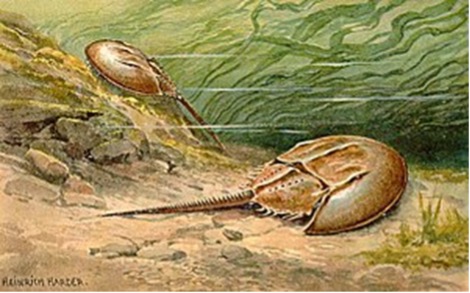Horseshoe Crab - Medicine
The sea contains a great variety of unusual life including the horseshoe crab. This creature lives along our coastlines and grows a rounded top shell 1-2 feet across. One distinctive feature is a rare chemical in horseshoe crab blood called limulus amebocyte lysate, or LAL. This important liquid is highly reactive to certain bacteria, solidifying and clotting in their presence. As a result, the chemical provides a sensitive and instantaneous test for bacterial contamination.
Horseshoe crabs are harvested as “blood donors” for the collection of LAL, a multi-million dollar activity. The crabs are released after the procedure to recover in the wild. The collected LAL is widely used to ensure that drugs, including the COVID-19 vaccine, are free of harmful bacteria, done by random sampling.
There are efforts to produce the LAL artificially; however, horseshoe crabs remain our main source of this valuable product. The crabs are called “living fossils” since their ancestors appear unchanged in the fossil record. In truth, these amazing creatures first appeared on the fifth day of creation along with all other sea life. Horseshoe crabs are examples of the countless resources provided in nature for our discovery and application.
